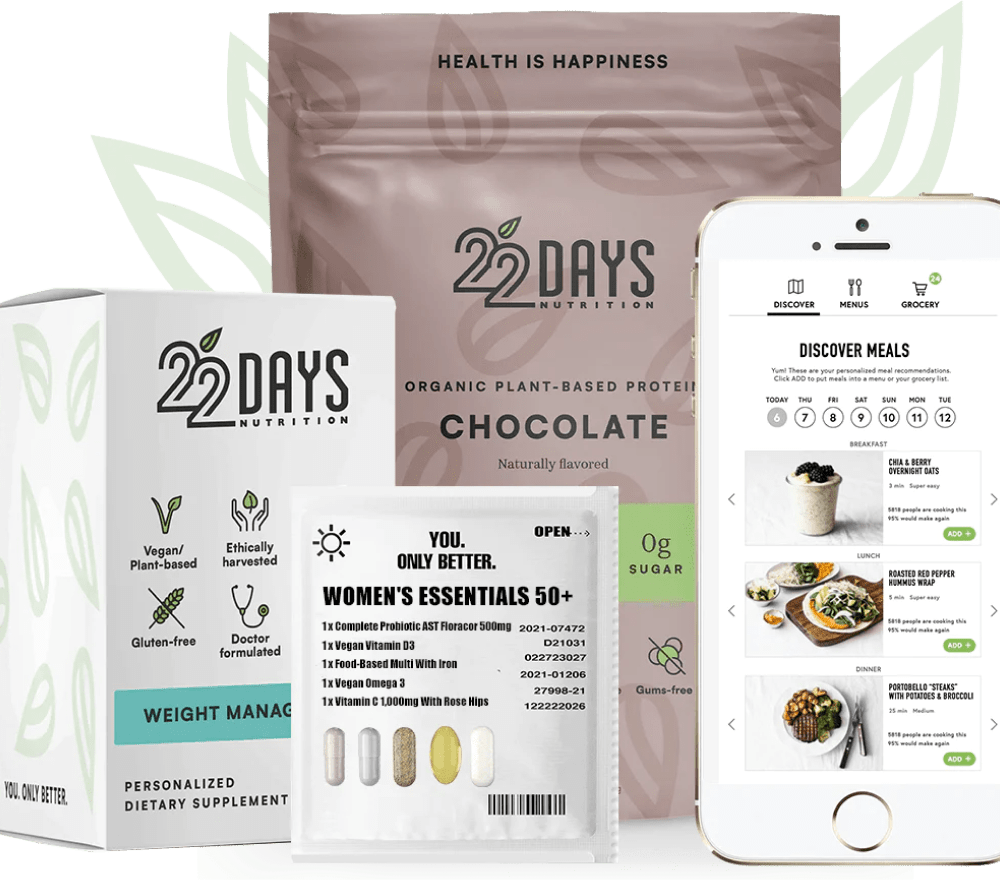4 Best Whey Protein Alternatives for Lactose Intolerant + Vegans
Cow's milk is the most common food allergen in America, affecting up to 50 million people. In most cases, this allergy is specifically triggered by lactose, which is the sugar found in dairy products. If you’re one of these many people, good alternatives for most dairy products (for example, whey protein alternatives or whey protein isolate) aren’t hard to come by.
On average, about 60% of Americans do not produce lactase, which is the enzyme necessary to digest lactose.
Since even small amounts of lactose can be irritating to the gastrointestinal tract of those affected by this ailment, it is important (and easy) to choose a plant-based protein over an animal protein like whey.
If you want to learn more about lactose-free protein.
Whether you have an allergy or just want to cut out dairy for some of the many other benefits, plant-based proteins (like pea protein) can still give you all that you would need from a protein supplement with a greatly reduced risk of stomach upset and bloat.
Whey Protein Alternatives -
Lactose Free Protein Powder
Whey protein powder is highly sought after (especially in the bodybuilding world) because it contains large amounts of all nine essential amino acids.
These consist of histidine, threonine, tryptophan, isoleucine, leucine, lysine, methionine+cystine, phenylalanine+tyrosine, and valine.
Are there any alternatives that can effectively match this? Actually, many plant-based proteins easily hit these marks, especially when multiple sources are blended together and concentrated into protein powders! They contain branched chain amino acids, help in building muscle and lose weight routines. A few of the most common plant-based options include:
Pea Protein
Pea protein is a naturally occurring protein found in peas, with high digestibility, a large range of amino acids, and an absence of common allergens.
Pea protein has comparable amounts of each amino acid, about three times the arginine content of whey, and high amounts of iron. It’s also high in BCAA’s!
22Days Protein is commonly used by those seeking to avoid whey because of it's simple, clean, and easy to digest ingredients (and delicious taste). In conjunction with pea protein, 22 Days also uses sacha inchi seeds and milled flax to lift amino acid levels even higher. This also adds additional benefits, such as Omega-3 fatty acids.
Soy Protein
Although soy-based protein powders are less common, soy protein (such as tofu and tempeh) is a great choice when it comes to meals. It is a complete protein that can be made thousands of delicious ways! Tofu and tempeh are both low in fat and packed with amino acids, calcium, magnesium, selenium, and iron.
Hemp Protein
Another common source of protein powder is derived from hemp. Although this has a smaller amino acid profile, you get the benefits of added omega-3 (which can also be accomplished by adding flaxseed to your plant based protein powders like we do).
Brown Rice
Protein powder derived from brown rice has one downfall: it’s not a complete protein. This means it should be
The inclusion of all of these foods in smoothie form, protein shakes, or whole food form, will ensure protein requirements are being met daily. They should especially be focused on when replacing whey protein, or any (or all) other animal products in your diet.
The levels of amino acids can be further amplified when blended with additional rice protein powders sources such as pumpkin seeds, flax seeds, sacha inchi seeds, etc. When multiple sources are included, the amino acid profile is boosted.
For example, the 22 Days Nutrition protein powder meets all requirements (there is even a chart to showcase this). It’s not chalky and is available in 4 delicious flavors (including the incredible strawberry)!
Plus, when making a smoothie, adding a tablespoon or two of your favorite nut butter, or some rolled oats will increase the amount of protein you are ingesting.
Some claims have been made that our bodies can only absorb between 25-35 grams of protein per serving anyway, so there might not even be a need to stress about exceeding those numbers (especially if you aren't trying to look like the hulk)!
Making Whey Protein Alternatives Even More Effective
It’s important to research the plant protein you choose beforehand as not all are created equal. Pea protein is the top choice for many because of the reasons listed earlier.
However, if you’re looking at other substitutes for whey protein powder, consider the type of protein. For example, brown rice protein on its own doesn’t have a full amino acid profile and is best when thoughtfully combined with other types to increase muscle growth and supplement fat weight loss.
Vary Your Meals
Overall, most plants contain protein, but each plant (and all foods for that matter) will contain varying amounts of the nine essential amino acids. In addition to supplementing with pea protein powder, it’s a great idea to vary your meals when it comes to plant protein.
Amino acid levels in plants can be found in abundance when consuming meals with a variety of ingredients. Beans and rice supply ample protein, as well as quinoa and lentils, peanut butter on whole-wheat bread, and tempe with whole wheat, or gluten-free noodles. It is very rare for a person to just eat beans for dinner, or plain noodles, so fear not!
Bottom Line
Whey protein alternatives have become increasingly more common, and with the added health benefits of switching to plant-based alternatives, we find this move to be a no brainer! Enjoy the massive selection of vegetables, beans, legumes, and grains available to you knowing there is great strength to be gained!





